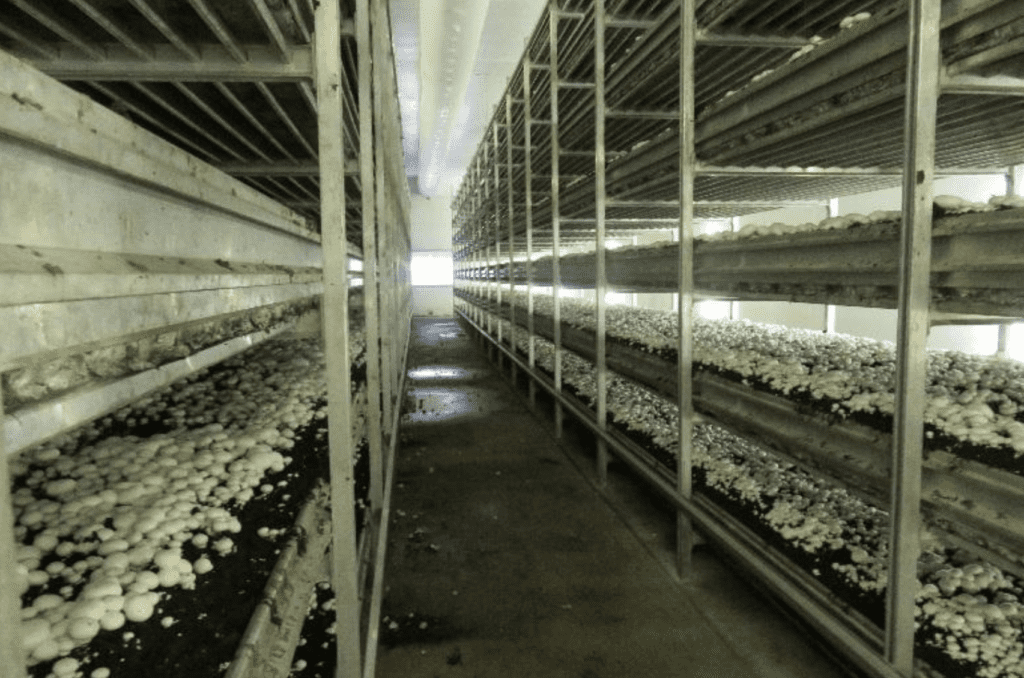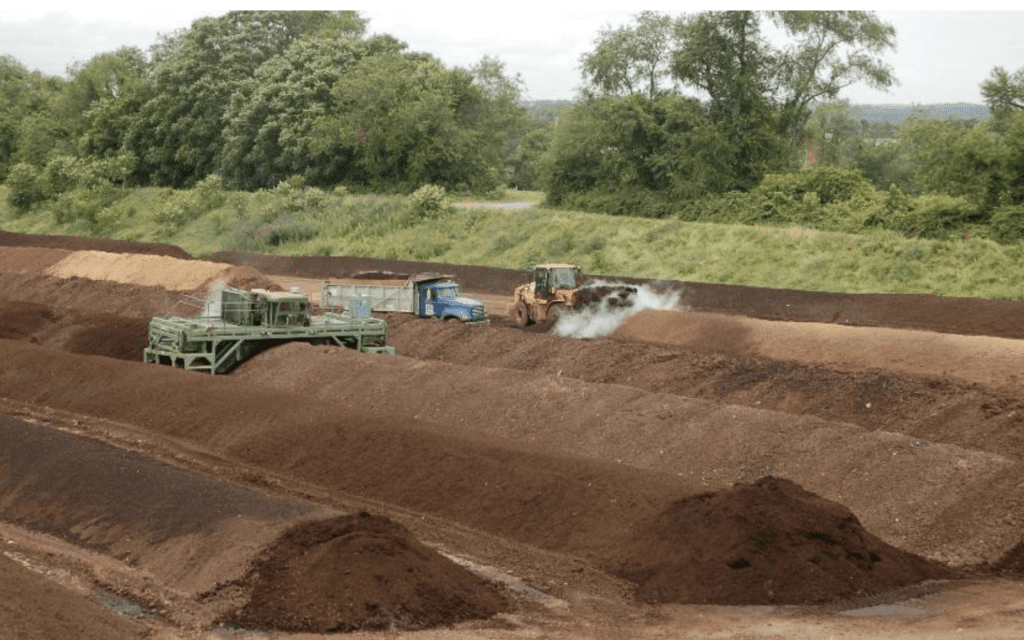
White button mushrooms in a growing room. Credit: Laurel Valley Soils
Jacob Chalfin, Laurel Valley Soils
This means that the rest of Pennsylvania’s farmers have ready access to post-production mushroom compost—a valuable organic resource. Like other kinds of compost, mushroom compost can be a useful tool for improving soil health by providing organic matter, beneficial microbes, and nutrients.
Unfamiliar with mushroom compost? In this Q&A, we’ll cover some of the basics and address common misconceptions. To dig in deeper, find us on Friday, February 8th at the 2019 Sustainable Agriculture Conference presenting: “Mushroom Compost: Busting Myths and Misconceptions to Build Healthy Soil.”
40-50%
|
25-35%
|
5–15%
|
4%
|
2%
|
1%
|
Contrary to what some might think, manure is not the main ingredient in mushroom compost. While manure is a component of the recipe, the main ingredients are hay and straw.
Hay and straw provide carbon, while straw horse bedding, poultry manure, cocoa shells, cotton seed hulls, and corn cobs provide nitrogen. This recipe yields consistent organic matter content, and an approximate N-P-K of 1:1:1. Since mushrooms are primarily consuming lignin and carbohydrates as they grow, other nutrients are left intact—leaving the resulting N-P-K values in mushroom compost mostly unchanged from the starting formula.
Like a rotting log in the woods, cultivated mushrooms prefer their growing media to be “half composted” so that mycelium can more easily access the lignin and carbohydrates they rely on for food. Because of this, fresh mushroom compost straight out of the growing room is intentionally only partially decomposed.
While perhaps counterintuitive, this fresh mushroom compost can be applied safely in its post-harvest state as a beneficial top-dress on row crop fields before sowing in both till and no-till operations. Crops can be sown immediately after mushroom compost has been applied, as long as the seed has good soil contact.
Another common practice is to apply fresh mushroom compost to hay ground or pasture as a top-dress at any time. Because mushroom compost is lighter and usually drier than other kinds of compost or manure, it can be easier to handle and spread.
Mushroom compost can also be aged by putting it through a second composting phase, which, depending on the processing method, could take six to 12 months. This aged mushroom compost now looks and performs like what most people would consider “standard” compost. Aged compost can be applied to almost all crops and is ideal for vegetables, flowers, and production nursery plants.

Mushroom compost windrows. Credit: Laurel Valley Soils
All compost types contain organic matter, but what is important is that organic matter on a dry weight basis (dwb) can vary significantly. For example, liquid dairy manure contains about 10 percent organic matter (dwb) content, while mushroom compost is about 50 percent. Higher organic matter content means you get more organic matter per unit application, which could help you improve your soil health more quickly.
As previously mentioned, mushroom compost typically has a 1:1:1 N-P-K ratio. The composting process metabolizes and stabilizes these nutrients so that they are converted into a slow-release form. As is the case for all soil applications, if applied above recommended rates, nutrients can exceed desired levels. Therefore, it’s important to perform soil tests to know your soil’s existing nutrient and organic matter content so you can determine proper application rates for optimizing soil health.
All compost, as well as fertilizers and manures, contains nutrients in the form of salts, including the big three—nitrogen, potassium, and phosphorus, which are essential for plant growth. The key is to identify which salts are contained within a given compost, their levels, and whether or not they are beneficial to plant heath. In general, compared to chemical fertilizer and raw manures, the soluble salts in compost are lower and more stable. Even so, it’s important to match the application rate to both crop input requirements and soil testing data.
Learn more about using mushroom compost and 160+ other food and farming topics at our 2019 Sustainable Agriculture Conference!